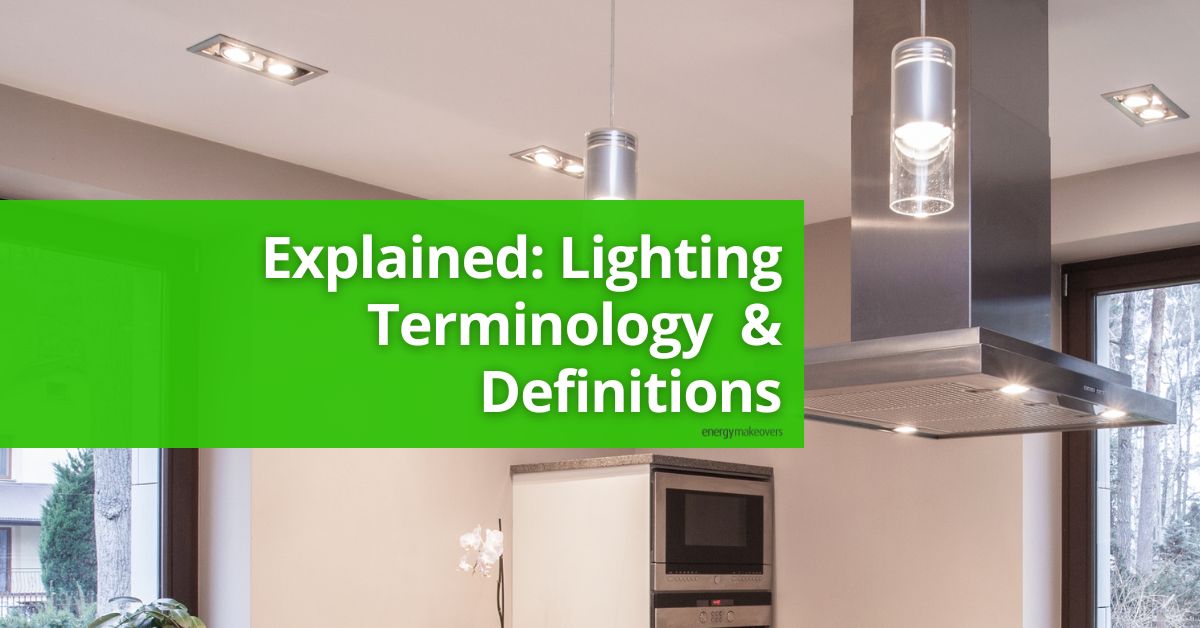
We are one of the largest LED upgrade businesses in Victoria and we take that honour seriously. If you’re not in lighting or an electrician, sometimes there’s a lot of lighting-related jargon that’s thrown at you and we thought we’d take the opportunity to explain some of the more common terms in lighting terminology and provide their definitions. Now, next time you talk to one of our lighting experts, you’ll know the lingo!
Here are the most common lighting terms, in order
Lumens: A unit of measurement that quantifies the total amount of visible light emitted by a light source in all directions. It represents the brightness of a light source. The higher the lumens, the brighter the light. The typical lumen level of a home globe is around 500L. A warehouse light, like a highbay, will be around 21,000L.
Wattage: The amount of electrical power consumed by a light source. In traditional incandescent bulbs, higher wattages generally meant brighter light. However, with the advent of energy-efficient lighting technologies, like LED, the relationship between wattage and brightness has become less direct. Now, you can expect a traditional downlight to be around 5 watts, where a highbay will be around 60W.
Kelvin (K) Temperature: A unit of measurement used to describe the color temperature of light. Lower values, such as 3,000K, produce warm, yellowish light (resembling traditional incandescent bulbs), while higher values, like 5000K, produce cooler, bluish light (similar to daylight). We have written a whole blog post on how to select the right colour LED for your home. Our standard downlights are 3,000K, where highbays for warehouses will be around 5,000K.
Call us Residential upgrades Commercial upgrades
Other important terms:
CRI (Colour Rendering Index): A scale from 0 to 100 that measures a light source’s ability to accurately render colours. Higher CRI values indicate better colour rendition (we probably won’t reference this during an appointment). LED lights produce a CRI of above 80, which is considered to be excellent.
LED (Light-Emitting Diode): A semiconductor device that emits light when an electric current passes through it. LEDs are highly energy-efficient, long-lasting, and have become widely used in various lighting applications.
Incandescent: A type of light bulb that produces light by heating a wire filament until it glows. These bulbs are less energy-efficient and have shorter lifespans compared to newer technologies. 95% of their energy consumption is used to heat the element.
Halogen: A type of incandescent bulb that contains halogen gas to increase its efficiency and lifespan.
Fluorescent: A type of light source that emits light when electricity excites mercury vapor inside a tube, causing it to produce ultraviolet light. This UV light then interacts with phosphor coating inside the tube, creating visible light. These types of lights are often used in offices and shops, and they’re outdated, inefficient and can be irritating to maintain.
Compact Fluorescent Lamp (CFL): A type of fluorescent lamp that is twisted or folded into a compact shape, designed as a more energy-efficient alternative to traditional incandescent bulbs. These are now superseded by LEDs and can be upgraded.
Ballast: A device used in fluorescent and HID (High-Intensity Discharge) lighting systems to regulate the electrical current supplied to the lamp.
HID (High-Intensity Discharge): A type of light source that produces light by passing an electric arc between tungsten electrodes inside a gas-filled tube. Common HID lamps include Metal Halide and High-Pressure Sodium.
Task Lighting: Lighting designed to provide focused illumination for specific tasks, such as reading, cooking, or working at a desk.
Ambient Lighting: General, overall lighting that provides uniform illumination to a space without causing harsh glare or shadows.
Accent Lighting: Directional lighting used to highlight specific objects, architectural features, or artwork, adding visual interest to a space.
Dimmer: A device that allows users to adjust the brightness of a light source, providing control over the intensity of the light.
So, now you know the big, important lighting definitions.
If you’d like to upgrade your home or business to LED, simply get in touch with our friendly team of lighting experts, who are happy to help.
Call us Residential upgrades Commercial upgrades


